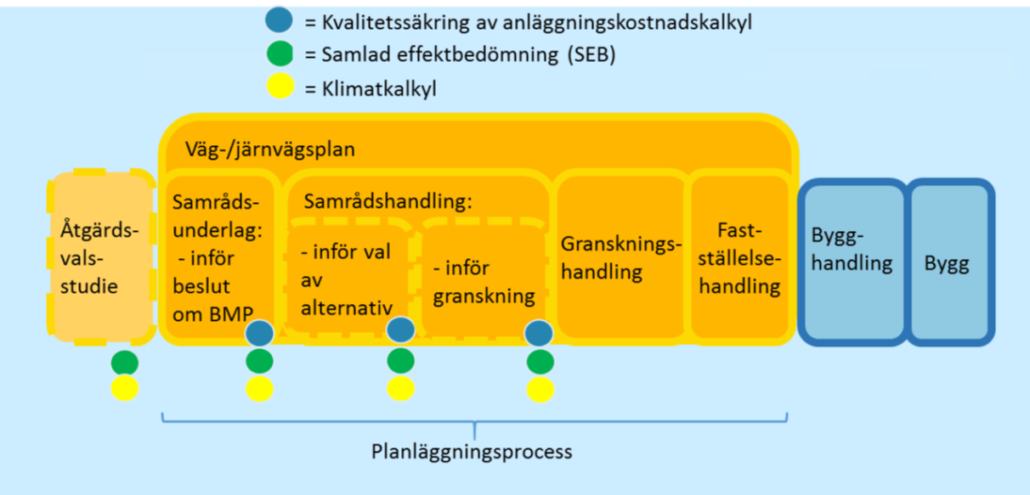Socioeconomic Impact Assessment
Socio-economic analysis reported in the Unified Impact Assessment (SEB)
The socioeconomic impact assessment (SEB) is a document in which an action is presented and in which the decision-making basis for the action in question is presented both structured and summarized. The underlying purpose is for the assessment to be a decision basis and information material for decision-makers, officials and citizens alike. The socioeconomic impact assessment should also serve as an input for those who wish to seek further information on the measure in question.
The socioeconomic impact assessment is used to describe in a structured and concise manner a proposed measure or package of measures (projects) in the transport sector, its costs and the effects it is expected to have if implemented. The socioeconomic impact assessment (abbreviated SEB) should be a decision basis with the aim of supporting planning, decisions and follow-up. SEB (method and template) describes the effects of the measure from three decision perspectives:
- Socio-economic analysis (priced and non-priced effects)
- Transport policy goals analysis (how are the transport policy goals affected)
- Distribution analysis (how are the benefits distributed among different groups)
The overall impact assessment shall be prepared for government measures, operational measures, maintenance strategies, different types of investment measures (projects), impact measures, policy measures and packages of measures that work together to solve an identified need.
Socio-economic analysis
A socio-economic calculation refers to profitability calculations that include all the effects of an action that could be identified, quantified and monetarily valued. A socio-economic analysis can also be called socio-economic assessment when it involves, in addition to the valued effects included in a socio-economic calculation, relevant effects that cannot be quantified or evaluated in monetary terms.
These effects should instead be pointed out, estimated and at least quantified or roughly evaluated and weighed against the calculated profitability. The measure can be considered socio-economically viable if the calculated profitability shows a positive net and the unpriced effects are not assumed to weigh so heavily that together with the priced effects they would mean a negative net.
Transport policy target analysis
Swedish transport policy is today guided by an overall goal as well as a functional goal and a consideration goal. The steps towards the goals are formulated as timed stage goals and / or goals for the financial year. The starting point in the analysis is a state description of the goal, that is, to what extent the goal was met (what was the outcome during the period).
The next question to be addressed in a goal analysis is how much of the goal fulfillment is a result of the measure implemented. What effect did it have? Effects between measures and outcomes are available to varying degrees depending on the area being analyzed.
Distribution analysis
Distribution analyzes of how individuals or groups can benefit or suffer significantly from a measure complements the socio-economic analysis and the target analysis. Using some forecasting models, one can find out what effects a particular measure can have for different groups of citizens, for example women and men, for different age and income groups or for different parts of the country.
Timings for establishing and revising the Socioeconomic Impact Assessment

Socioeconomic impact assessment is established in both action selection studies and in the physical planning process. The idea is that the document should follow the action (project) and develop as more information is available about the action. Normally, a SEB from an action selection study should be revised from the time it reaches the planning process. However, in the transition phase between the old and new planning process, there may be cases where a SEB is established first in the planning process.
As a minimum requirement, the Socioeconomic Impact Assessment for investment measures (projects) shall be revised linked to various activities in the physical planning process where the construction cost calculation must be prepared or revised according to the successive principle. This should be done in the final phase of each planning activity. On these occasions, the Socioeconomic Impact Assessment shall also be reviewed.

